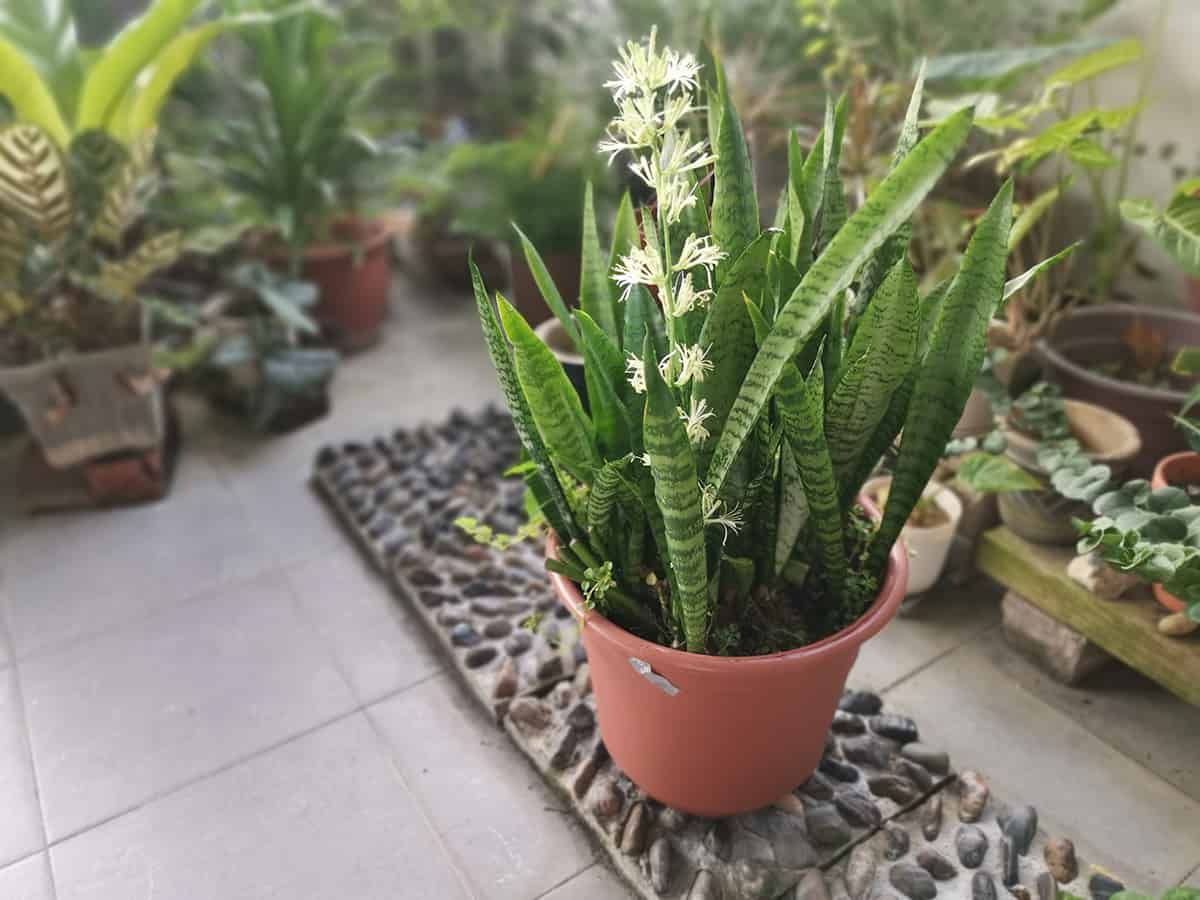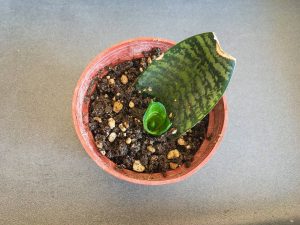You love your snake plant for its hardy nature and striking foliage, but you’re yearning to see it bloom. It’s a rare sight, and many plant enthusiasts struggle to achieve it.
Getting them to flower is not always an easy task, as snake plants are known to bloom infrequently, especially when grown indoors. With the right care and attention, you can increase the chances of your snake plant producing flowers.
To encourage your snake plant to flower, it is essential to provide proper lighting, adequate watering, and appropriate fertilization. These factors will help support the overall health of the plant and create the ideal conditions for blooming. By taking the right measures and understanding your snake plant’s needs, you can potentially enjoy the rare sight of its stunning flowers.
Table of Contents
Understanding Snake Plant Flowering
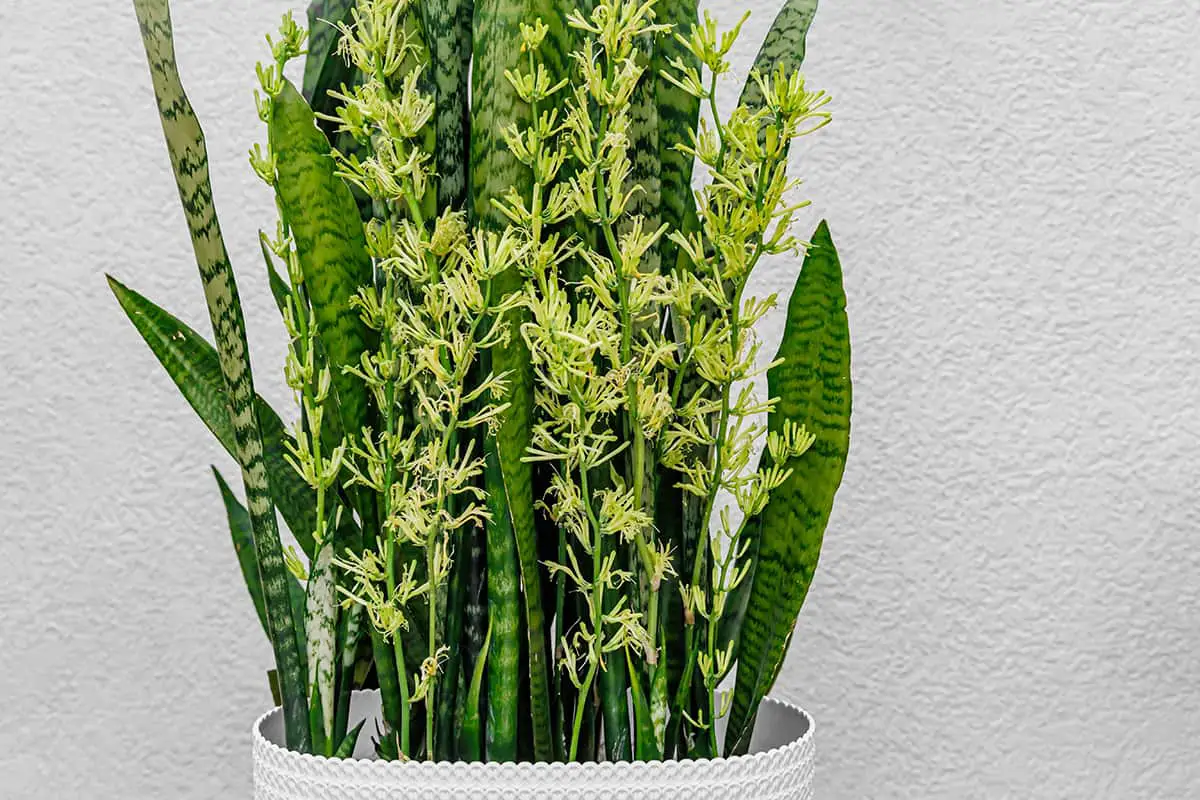
Biology of Blooming
The snake plant, also known as Sansevieria or Mother-in-Law’s Tongue, is a popular houseplant with uniquely shaped leaves. Although it’s mainly grown for its foliage, the snake plant produces small, fragrant flowers under certain conditions. The flowers usually appear on a long stalk, with the bloom color typically being white or cream. After pollination, the plant may produce small berries containing seeds.
Rare and Unpredictable
It’s crucial to acknowledge that Snake Plant flowering is an infrequent and somewhat unpredictable occurrence. Unlike other houseplants, their blooms are not a yearly guarantee but a special surprise. The flowers, when they appear, are typically delicate, white, or cream, and emit a pleasant fragrance, especially at night.
Environmental Triggers
The key to encouraging a Snake Plant to flower lies in understanding its native habitat and replicating those conditions as closely as possible. In the wild, Sansevierias are accustomed to periods of drought followed by rain, which often triggers flowering. Therefore, replicating these conditions — a cycle of stress followed by relief — can sometimes encourage blooming.
Stress Factors
Stress factors, such as allowing the plant to become root-bound or undergoing a period of drought, are often precursors to flowering. In nature, these conditions signal the plant that it’s a suitable time to reproduce. In your care, this means not rushing to repot your Snake Plant even if it seems cramped, and being cautious with water.
Light Conditions
While Snake Plants are renowned for their tolerance to low light, flowering often requires more substantial light exposure. Placing your plant in a well-lit area, with access to indirect but bright light, can enhance its chances of producing flowers.
Seasonal Influence
The blooming of Snake Plants is more likely to occur during the spring or summer months when the daylight hours are longer and the plant is in its active growing phase. Adjusting care routines to accommodate these seasonal changes can be beneficial.
Plant Maturity
It’s also important to note that mature Snake Plants are more likely to flower. A younger plant, still focusing on growth and establishment, may not expend energy on flowering. Thus, patience plays a significant role in witnessing a Snake Plant bloom.
Optimal Growing & Care Conditions For a Blooming Snake Plant

Light Exposure
Snake plants thrive in bright, indirect light but can also tolerate low-light conditions. It’s essential to avoid direct sunlight, as it can scorch the leaves. In order to facilitate flowering, a higher light exposure might be beneficial.
Temperature and Humidity
These plants prefer temperatures between 70-90°F (21-32°C) and can tolerate a minimum of 50°F (10°C). Maintain a moderate humidity level, as too dry or too wet conditions can negatively impact the plant. Creating a balance in these environmental factors will encourage blooming.
Soil and Fertilization
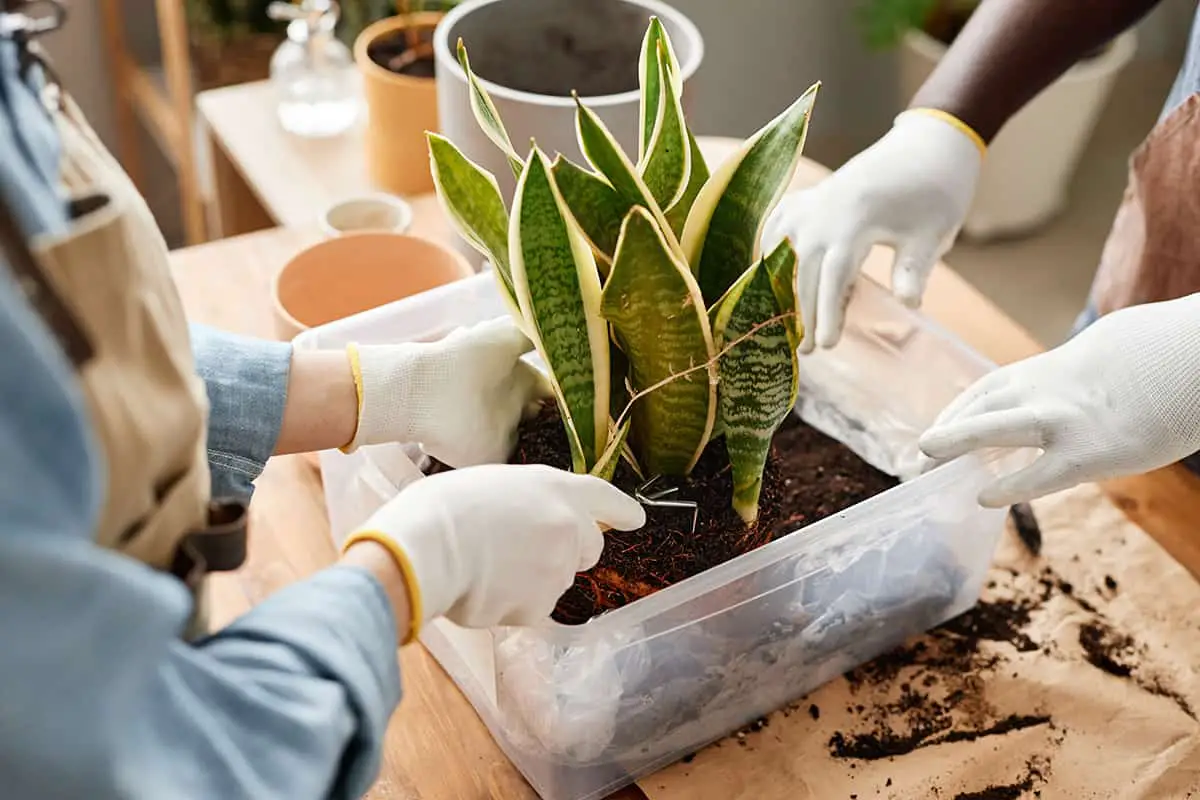
Snake plants need well-draining soil, so a 50%:50% mix of potting soil and perlite is a good choice. Use a balanced fertilizer at half strength, with an N-P-K ratio (Nitrogen-Phosphorus-Potassium) of about 10-10-10 to aid in the formation of flowers. Fertilizing should be done every 4-6 weeks during the growing season.
Watering Schedule
Snake plants thrive with a consistent watering schedule. Water your snake plant thoroughly and allow the soil to dry out completely before watering again. Overwatering can lead to root rot and damage the health of your plant. It’s essential to maintain a balance between keeping the soil moist and letting it dry out.
Pruning and Grooming
Pruning and grooming snake plants is crucial for their growth and appearance. Remove any dead or yellow leaves with clean, sharp scissors. This helps maintain your plant’s health by preventing disease and promoting new growth. Additionally, snake plants will occasionally produce flowers, but this is a rare occurrence; proper care and maintenance may encourage this natural process.
Encouraging Blooms
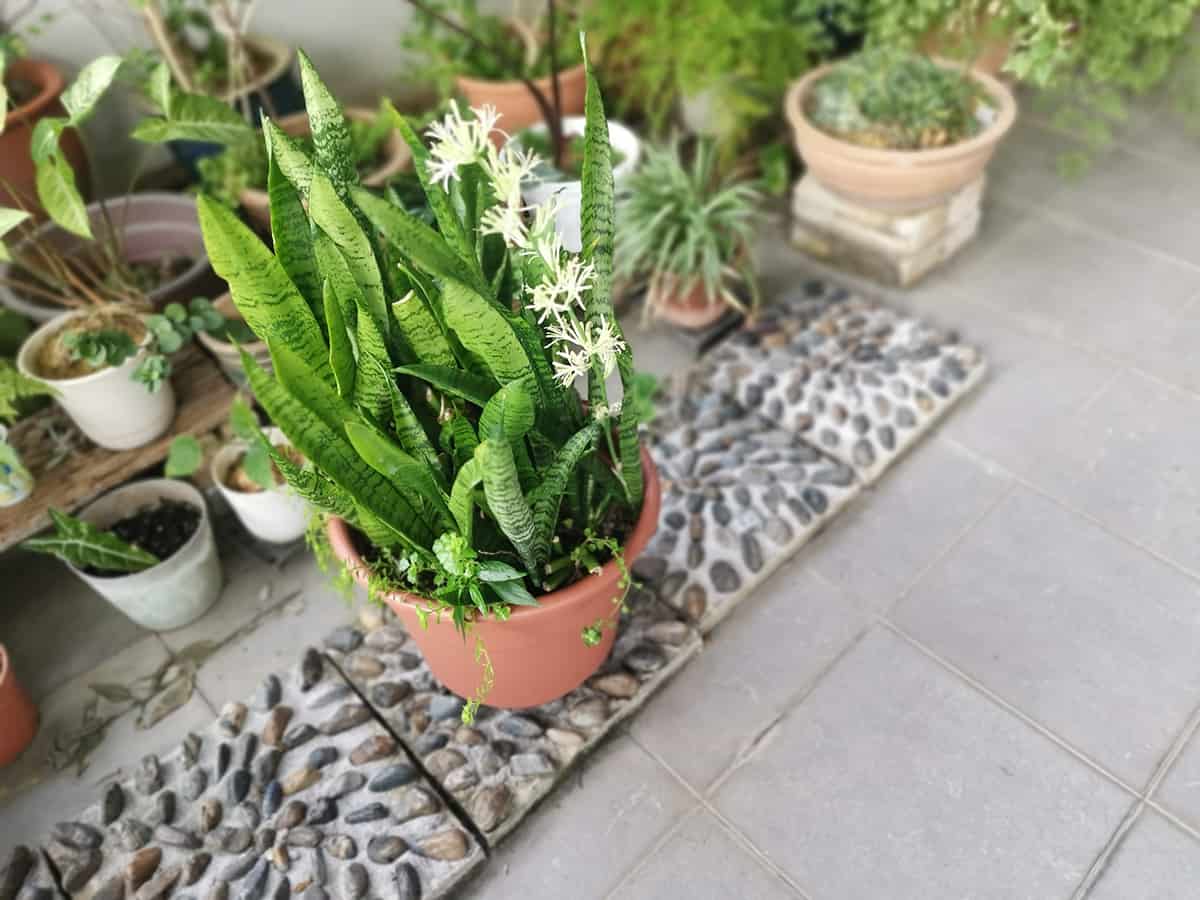
Stress Induction
One method to encourage blooms in your snake plant is through stress induction. You can do this by exposing the plant to brief dry spells. Refraining from watering the plant for a short period forces it to conserve energy and focus on reproduction, leading to flower production.
Maturity and Seasonality
Snake plants tend to bloom when they reach maturity. Ensure your plant is healthy and established before expecting flowers. Furthermore, seasonality plays a role in their flowering; snake plants often bloom during Summer and Autumn. Providing a stable, well-lit environment during these specific seasons will boost the likelihood of flowering.
Benefits of Snake Plant Flowers
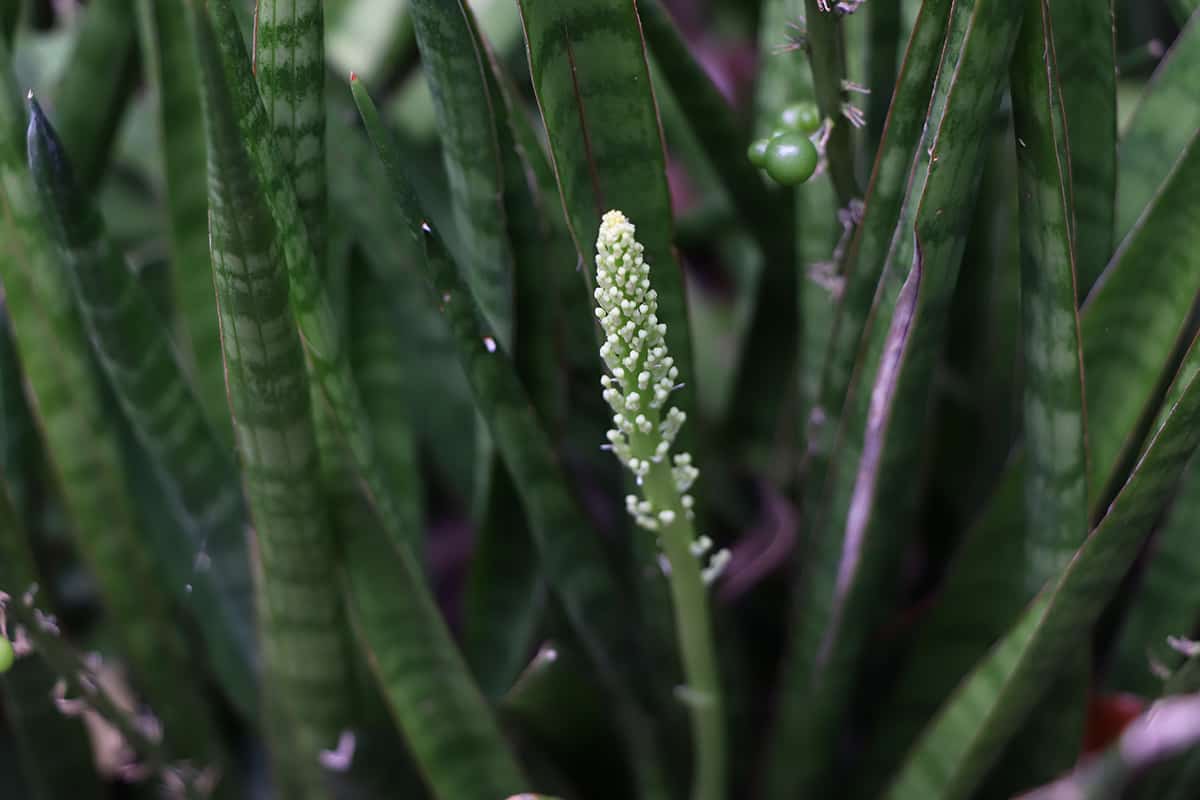
Snake plant flowers offer several benefits to the environment and the indoor areas where the plants are growing. These plants, often referred to as Sansevieria, can purify the air by removing harmful pollutants. Key pollutants like benzene, formaldehyde, and trichloroethylene are removed, making the indoor air cleaner and healthier for the occupants.
Snake plant flowers are low maintenance, which contributes to their popularity as indoor plants. They are resilient and can adapt to various light levels and temperatures. Additionally, they only require minimal watering, allowing the plant to thrive with little care. This low-maintenance nature makes them ideal for individuals with busy lifestyles or those who may not have a green thumb.
Another benefit of snake plant flowers is their contribution to the aesthetic appeal of indoor spaces. Their unique, tall and slender leaves make them a beautiful addition to homes and offices. The green color of the leaves adds a sense of calm and tranquility. When these plants bloom, their flowers are often fragrant, adding a pleasant aroma to the surroundings.
Lastly, snake plants are known to attract pollinators when grown outdoors. This is an important aspect, as pollination contributes to the reproduction and survival of many plant species. By attracting pollinators, snake plants play a role in maintaining the health and diversity of plant ecosystems.
